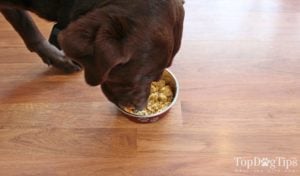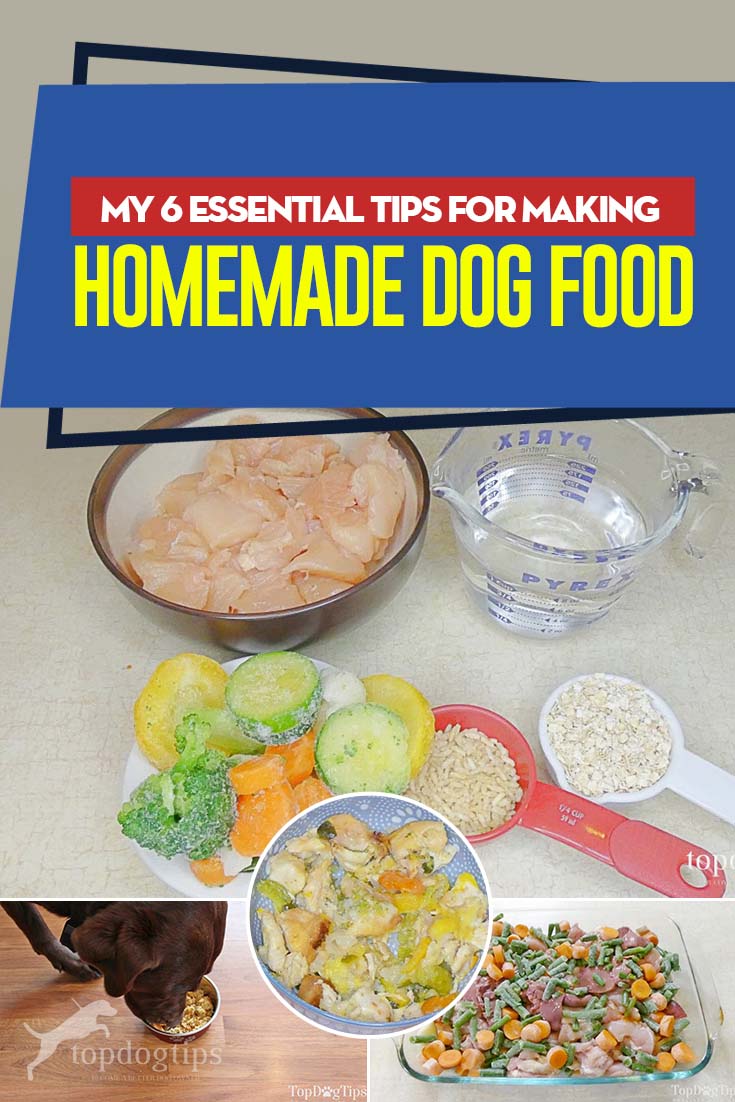We all know that homemade dog food can be the healthiest option for our pets if done right. Making meals at home is the only way to know for sure which ingredients are going into the food and how the meals are prepared. If not done properly, however, it can quickly cause severe health problems that could result in your dog's death.
Like anything else, there are pros and cons when it comes to making homemade dog food. Homemade dog food uses fresh, human-grade ingredients. You can even include some canine superfoods that can offer major boosts to your dog's overall health and well-being.
There are a number of reasons why pet owners choose this diet, including:
- a desire to provide their dog with better nutrition
- catering to a dog with allergies
- fear of dangerous ingredients in commercial pet food
- unique health/dietary needs of a dog with health concerns
 While it can offer some great health benefits, it can also be extremely dangerous to feed your dog a homemade diet if you do not know what you are doing. It's not enough to just look up recipes on the internet. This may come as a surprise, but you cannot trust everything you read online.
While it can offer some great health benefits, it can also be extremely dangerous to feed your dog a homemade diet if you do not know what you are doing. It's not enough to just look up recipes on the internet. This may come as a surprise, but you cannot trust everything you read online.
Sadly, a recent study from the University of California, Davis, School of Veterinary Medicine proves that recipes created for canines are not usually nutritionally balanced. They selected 200 recipes from 34 different sources, including dog care books, veterinary textbooks and dependable online resources.
Of the 200 recipes that they looked at, only 9 of the recipes provided balanced nutrition in concentrations meeting the minimum standards established for adult canines by the Association of American Feed Control Officials. Of those 9 recipes, only 5 provided adult dogs with essential nutrients in concentrations that met the National Research Council’s Minimum Requirements.
Today, I'm sharing my 6 essential tips for making homemade dog food. These aren't all the guidelines that I recommend, but if you don't follow these essential rules, you're not going to be able to make a nutritionally balanced diet for your dog.
My 6 Essential Tips for Making Homemade Dog Food
1. Consult Your Vet or A Canine Nutritionist
It's absolutely imperative that you consult an expert before switching your dog to a homemade diet. First, they will evaluate your dog and his medical history. Then, they will help you create recipes that will meet all of his nutritional needs.
Like humans, dogs are all different. Each dog has their own unique nutritional needs based on factors such as:
- age
- weight
- activity level
- breed
- health condition
You would need to do extensive research and learn about the specific nutritional needs of canines in order to make these choices yourself. Every dog has unique needs when it comes to how much protein, carbohydrates, fat, vitamins and minerals their body will need in a day.
It's also important to remember that your dog's nutritional needs will change over time. For example, a puppy will have different nutritional needs than an adult dog. If your dog is diagnosed with a health condition, like arthritis or a heart condition, his nutritional needs will change.
For all of these reasons, it's crucial that you work with a canine nutrition expert to create the homemade dog food recipes that you feed your pet. You can get ideas from recipes that you find online, but an expert will likely recommend that you substitute certain ingredients or add supplements to make the meal nutritionally balanced.
2. Ensure Recipes Are Nutritionally Balanced
As I mentioned in the introduction to this article, most recipes that you find online or in published cook books are not nutritionally balanced. I highly recommend using these recipes as a starting point and asking a canine nutritionist about any necessary supplements needed to make them balanced for your dog.
While the main concern is usually nutritional deficiency, meaning the recipe lacks necessary nutritional requirements, nutrient toxicity is also a major problem. Nutrient toxicity occurs when a recipe offers too much of a needed ingredient. Over time, these excessive nutrients can build up in your dog's body and cause major health problems.
3. Use Supplements
DO NOT add supplements to homemade dog food without consulting a canine nutrition expert. As I just stated, nutrient toxicity can be lethal to your pet or result in lifelong health problems. For example too much calcium (known as hypercalcemia) in dogs can lead to severe symptoms like pain when urinating, blood in the urine, muscle weakening or uncontrollable muscle twitching.
With that said, most recipes that you find will not be nutritionally balanced and will require the addition of supplements. Some of the most common supplements used in the making of homemade dog food include calcium, Vitamin E, Vitamin B and Zinc. Just be sure that you get dosage recommendations from a trained professional.
RELATED: 20 Pros, Cons and Myths About Homemade Dog Food
4. Change Things Up!
Would you like to eat the same meal for breakfast, lunch and dinner every day for weeks at a time? Of course not! So, what makes you think that your pets would enjoy this mealtime monotony?
When working with an expert to create recipes for your pooch, make sure you have a repertoire of at least a dozen meals. You can prepare multiple meals and serve different foods daily or just switch things up every couple of days. Trust me, your dog will be a lot happier with some variety in his diet.
5. Educate Yourself On Dog Friendly Ingredients
You may be able to substitute certain ingredients when making homemade dog food. If your dog doesn't like chicken or has a protein allergy, it's possible for you to substitute bison, ostrich or venison instead.
 Similarly, your dog may be picky about the fresh fruits and vegetables that you include in certain recipes. If your dog isn't a big fan of broccoli, for example, you may be able to add squash, green beans or peas to the recipe instead.
Similarly, your dog may be picky about the fresh fruits and vegetables that you include in certain recipes. If your dog isn't a big fan of broccoli, for example, you may be able to add squash, green beans or peas to the recipe instead.
Educate yourself on dog-friendly ingredients and which ones can be easily substituted. Start by focussing on the ingredients that your dog cannot eat or does not like. As you continue with your homemade dog food journey, you'll learn more about the best ingredients for your dog and the possible substitutions.
6. Mix Homemade Food with Kibble to Save Money
I often hear that pet owners are leery about feeding homemade dog food because of the added expense. While it is true that feeding a homemade diet is more expensive than feeding the average kibble, it is actually less expensive than feeding a commercial diet of the equal quality.
If you'd like to save a little money and provide higher nutrition for your dog, you can use homemade dog food as a topper instead of a full meal. Again, you'll need to discuss this addition with your veterinarian or a canine nutritionist, because you don't want to provide an abundance of certain common nutrients.
READ NEXT: 6 Nutritional Guidelines for Safe Homemade Dog Food Cooking













